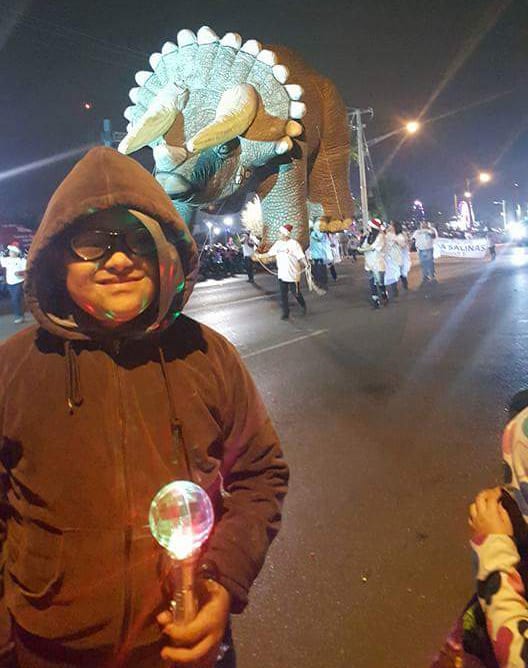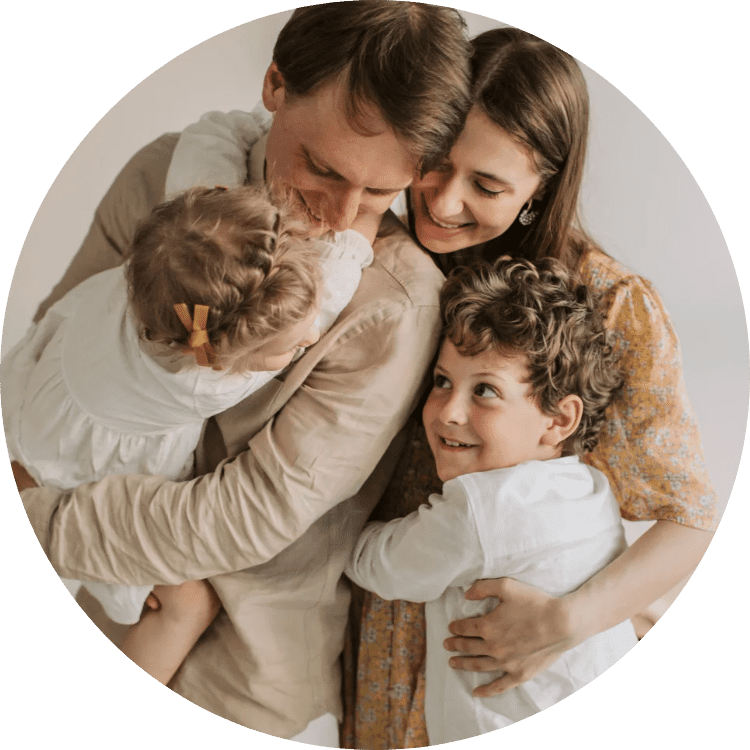The Safe and Sound Protocol: Clinical Information and Resources
The purpose of the Safe & Sound Protocol (SSP) is to initiate and access a physiological state conducive to well-being, positive engagement with others, and growth in learning and therapy.
Rooted in his Polyvagal Theory, Dr. Stephen Porges created the SSP to help people learn to attain a grounded state where they feel safe, connected, calm and social.
By helping to access a calm and grounded state, the SSP promotes a neural platform for health, growth and restoration.
What is Physiological State?
Physiological or emotional state is at the root of all behavior. Some states promote sociability. Some promote tantrums. Others promote shut down.
- What is the “just right” state for therapy? It’s the sweet spot where a person is available and motivated for the task at hand.
- How do you know when your client or student is in the perfect state for optimal performance? You’ll notice signals in the: eyes (bright and focused); face (content with the ability to express all emotions); voice (capable of prosody or tone changes); body (relaxed but with good muscle tone); and rate of movement (smooth and responsive – not too fast or slow).
- These are all indicators of a state of focused, relaxed, and confident alertness optimal for learning and performing with confidence.
State is critical to how we approach the task at hand. So when a client has better state control, not only can they be more socially engaged, they are more open to therapy. Better state regulation improves therapeutic outcomes.
The Polyvagal Theory describes the evolutionary hierarchy of our autonomic nervous responses, central to which is the vagus nerve. The Social Engagement System (SES) is our highest level and newest (in evolutionary terms) strategy for self-regulation. It is triggered by signals of safety and puts the brakes on defensive strategies, allowing us to rest and digest (our parasympathetic system).
If we sense danger, however, the SES will release the brakes to engage a more primitive response: that of fight or flight (our sympathetic system). And if we detect life threat, our response may devolve even further to immobilization, or freezing behavior (like a deer in headlights). None of these responses can be reasoned; they all occur unconsciously via neuroception, the body’s ability to perceive threat outside of our awareness.
Plasticity of the Autonomic Nervous System and State
The SSP exercises the neural pathways associated with regulating behavioral state and social engagement. These are aspects of the Autonomic Nervous System (ANS). And just as the brain is plastic and can change based on experience, the ANS is also plastic. Peer-reviewed research has shown the SSP to significantly increase vagal regulation of the heart, which promotes better control of our state.
Critical to healthy engagement with the world, the Social Engagement System (SES) interprets cues from our social environment, like vocal prosody, eye contact and facial gestures to gauge our level of safety. Sensing safety, the SES allows us to participate genuinely with others and be open and willing to accept new ideas.
The vagus nerve carries the most bi-directional information between the brain and the body of any other nerve. It initiates in the core of the brain and travels to the depths of the gut. Along its travels, the vagus nerve affects eye movement, facial expressions, tone of voice, heart rate and heart rate variability, breathing, and the function of the spleen, liver, kidneys and intestines. It can help to reduce inflammation and to improve your immune response. It is the care-taking nerve of the body.
The vagus impacts more than just physiological processes. When you say something is “getting on my nerves” or that you have a “gut feeling”, you’re referring to the vagus nerve. Through neuroception, a term coined by Dr. Stephen Porges, the vagus nerve is assessing the safety of a situation and the mood of people you interact with. And that information is relayed to the brain.
The vagus nerve activates the parasympathetic nervous system. When the vagus is stimulated, it elicits the relaxation response, slowing your heart rate and relaying instructions to release certain proteins and enzymes to calm you down. When you are relaxed, people can see it in your face and hear it in your voice because of the vagus nerve. You are better able to: concentrate, self regulate and connect with others when you are in this more calm and safe state.
The SSP is best used together with other therapies
Changes from the SSP can be cumulative and will be enhanced by the social support the client receives and the learning opportunities they are presented. While you may notice some very positive changes while using the SSP, it is not meant to be used in isolation. The changes you see can potentiate neuroplasticity and functional change from subsequent therapy modalities.
Client Experiences with the SSP
Sophie’s Story
Sophie is a 6 1/2-year old girl who was diagnosed with Autism Spectrum Disorder when she was five. Her Occupational Therapist was introduced to the SSP in July as part of a feasibility trial and immediately thought of Sophie who was very anxious and seemed constantly in a state of threat. Her fear prevented her from trying many things, as they seemed impossible to her. The extreme over-arousal of her sympathetic nervous system also affected her learning, her speech and her ability to communicate effectively.
These pre- and post-SSP videos capture the marked decrease in her level of fear and the improvement in her confidence and demeanor. Sophie’s mother is overjoyed with the changes she’s noticing in Sophie:
- Her facial expression is now relaxed and she seems less anxious
- Her spontaneous speech has escalated (“Her language is improving like crazy!” – Sophie’s Mom)
- She’s exhibiting prosocial behavior (“It’s not all about her anymore.” – Sophie’s Mom)
- Her emotional regulation is much improved (“Sophie is now sitting in the group at circle time and listening intently. She even raised her hand to ask a question!” – Sophie’s teacher.)
David’s Story

- Severe anxiety in noisy and/or crowded environments
- Significant over-responsivity to sounds
- Lack of consistent response to requests or name calling
- Poor sleep quantity and quality
David had an extraordinary response to the SSP! His mother tearfully expressed her gratitude for the intervention as she reported the changes she and her family have noticed.
- After Day One of the program, David slept throughout the night for the first time.
- Since completion of the SSP, David has been much more interactive with other children. He approaches others to join in play or conversation.
- Prior to the SSP, David refused to go to family gatherings or parties. He would hide in the bathroom away from all the activity. Over the holidays, he attended a large family gathering and even danced!
- Every year in our community, we have a well-attended large holiday parade complete with floats, high school bands, fire and police department activities, musical guests and participation by other community organizations culminating in an elaborate firework display. Every year, our family attempts to attend, but if we are able to go at all, David usually sits in the family van wearing headphones watching movies. This year, for the very first time, he stood near our family outside and watched every float, band and musician and even cheered during the firework finale!
Bente’s Experience
“My stomach has a bit of a smile, with eyes that blink very happy. That’s why I am very happy. I feel free.”
– Bente, 6 year old girl
Kim’s Experience
“Every therapist we’ve seen — they have all told us to be looking at residential treatment facilities… I no longer worry for him. My worries for him are much more in line with what every parent worries about for their child.”
– Kimberly McRae, Mother
Ewan’s Experience
“I’ve spent a lifetime running away from my mind… or avoiding my mind, and to have that gift of quietness, to have that gift of enjoying my mind,… to be present with my mind… is truly amazing.”
– Ewan
Features Addressed by the SSP
Rather than using diagnoses to determine if the SSP is right for a particular person, we have instead referred to the features that the intervention addresses. Broadly, these can be categorized into: Social Communication; Physiological State; and Sound Sensitivity.
The following tables include direct responses from clients about the changes they or their child experienced following the five-day SSP intervention.
Social Communication
The SSP is a portal to the Social Engagement System and it can have powerful effects on how a client interacts with the world. Examples are: better eye contact and facial expressivity; improved understanding of speech; better emotional control; more reciprocal interactions; and increased emotional expressivity among others.
Pre-SSP |
Post-SSP |
| Not very aware of others’ feelings or even her own | She’s more interested in what others are feeling. For instance, if a child is crying, she gets concerned. She also tells us if she’s upset with something. Sometimes when she’s happy, she tells us about it. She seems to have developed more compassion. She actually moves toward upset/hurt kids to help. |
| Poor social behavior; usually runs around in her own world | She’s observing peers at the playground now. She was even socially engaged enough that another girl came over, introduced herself and asked her to play! |
| Social interaction is often affected by sound sensitivity, so I am not always eager to connect with people | I have been enjoying social engagements! Even when there was eating, I have enjoyed many social interactions. Feeling pleased instead of drained. This program produced a deep sense of relaxation. As the days passed, it seemed like doors that had been jammed open got to close and my brain was processing sound in a different way. |
| Nonverbal. Difficulty in communicating with other people | She has shown the most improvement in her desire to communicate nonverbally. She has facial expressions, laughs, plays and points to what she needs. She has more of a desire to communicate and play with other children. She even started to pretend play after the program! Her social interaction is definitely improving even as a nonverbal child. She seems to be making little strides every day and is even trying to speak more. |
| Often avoids eye contact | Has been more relaxed and keeping better eye contact |
| Poor communication with peers | More social interaction; generally happy and not as frustrated |
| Unresponsive or argumentative | We’re noticing fewer “I don’t know”s and “I can’t”s |
| Responded only to specific questions | She’s been commenting more now. She sometimes talks about something even if we don’t ask. Conversation is more spontaneous now. |
| She very rarely would initiate conversation unless she was asking for something | She is initiating conversation more freely now. We’re seeing spontaneous verbal language we hadn’t seen before. |
| Facial expressions are flat. (23-year old who sustained 2 head traumas/concussions related to car accidents) | A real change in facial expression. When happy, she looks happy and when angry, she has the dirty look face mastered. |
| Discomfort with physical expressions of affection | My 24-year old daughter told her cousin today that the SSP “made her a better hugger!” |
| Communication problems related to Fetal Alcohol Syndrome | New behaviors his parents are noticing: Eye contact with each person around the dinner table; Accelerated emergence of correct verb tense; Increase in intentional pauses before speaking and careful articulation of sentences; General improvement in fluency; More affectionate; Improved use of known vocabulary. |
Physiological state
Just like the brain, the Autonomic Nervous System is plastic and can “learn” to stay more activated than necessary. Being in a state of chronic defensiveness, as in some psychiatric and behavioral disorders, compromises the social engagement system and the related neural networks “learn” to engage less.
By improving the ability to assess safety in social situations, the SSP helps clients to activate a parasympathetic state. Improving state promotes behavioral regulation.
Pre-SSP |
Post-SSP |
| Lingering struggles with sleep, attention and motivation following the death of a spouse | “There seems to be a better sense of control about my emotions and a sense of balance and calm. It has been extremely rewarding to be more deliberate and aware of my reactions. This change has improved the communication and conflict resolution in some of my most important relationships.” |
| Problems with state regulation | Calm behavior, happier, more facial expression (a lot of smiles). His speech therapist’s comments were: “He has made a huge leap with word finding, attention to task, and endurance. Major changes on my end.” |
| Low confidence; unwillingness to try new things | Improved willingness to try new things; noticeable pride in accomplishments |
| Fearful | OK with taking risks – step by step |
| Unresponsive or argumentative | We’re noticing fewer “I don’t know”s and “I can’t”s |
| Morning and evening routines have been trouble spots for some time | Now she seems more willing to get ready by herself. She’s been more cooperative and less irritable – even when hungry/tired. |
| Fearful at playground | She’s not afraid to use the playground equipment at the park anymore. Hesitant at first, but after the first try, she was doing it like she’s been doing it for a long time. |
| Poor emotional control | Much less trouble controlling emotions and excitement. Better control of emotions and fewer tantrums now. |
Sound Sensitivity
Sensitivity to sounds is a prevalent symptom in a number of disorders. People who experience sound sensitivity may: respond negatively to unexpected or loud noises; become distracted or disturbed when there is a lot of or continuous background noise; and/or find it difficult to extract the frequencies of human speech from background noise. With the SSP, we have seen significant improvements on the SCAN-3 (a measure of auditory processing) specifically on the Filtered Words and Competing Words subtests. These respectively assess the ability to decipher human speech from background sounds and to hear equally from both ears.
Pre-SSP |
Post-SSP |
| Overwhelmed easily by sounds in the environment | Can more easily accept sounds that previously bothered them. For instance, mall music that had previously been too overwhelming is now not even noticed. |
| Struggles to modulate voice level | Better control over voice volume; less need for yelling or talking loudly. |
| Bathroom hand dryers have ALWAYS made her cover her ears | This week, she had NO reaction to a public hand dryer. I asked her if the noise bothered her and she said NO. |
| Cannot tolerate trigger sounds: sneezes; coughs; sniffs; eating and drinking sounds. Reacts by covering head and ears and cries and screams (11-year old girl with Misophonia) | Has been much more relaxed and is not noticing all occurrences of these sounds. |
| Responded only to specific questions | She’s been commenting more now. She sometimes talks about something even if we don’t ask. Conversation is more spontaneous now. |
| I have experienced sound sensitivity since age 8. Started wearing earplugs in college and then more and more until almost continuously for the last 7-8 years. | I can now be around people eating and drinking without earplugs. This is astounding to me! These sounds are more in the background now. This is incredibly hopeful. |
| Social interaction is often affected by sound sensitivity, so I am not always eager to connect with people | I have been enjoying social engagements! Even when there was eating, I have enjoyed many social interactions. Feeling pleased instead of drained. This program produced a deep sense of relaxation. As the days passed, it seemed like doors that had been jammed open got to close and my brain was processing sound in a different way. |
| Discomfort with sound in classroom | “I was talking with her teacher and we both realized that she has stopped saying that the classroom is so loud! That is one of the major reasons we decided to try it! I think the additional things we have seen are all a result of the reduced hypersensitivity to those noises… For instance, she set a goal and achieved it for swim team, and is more focused in choir. She is making gains in math. I really do think it has helped more than I know or can explain…” |





